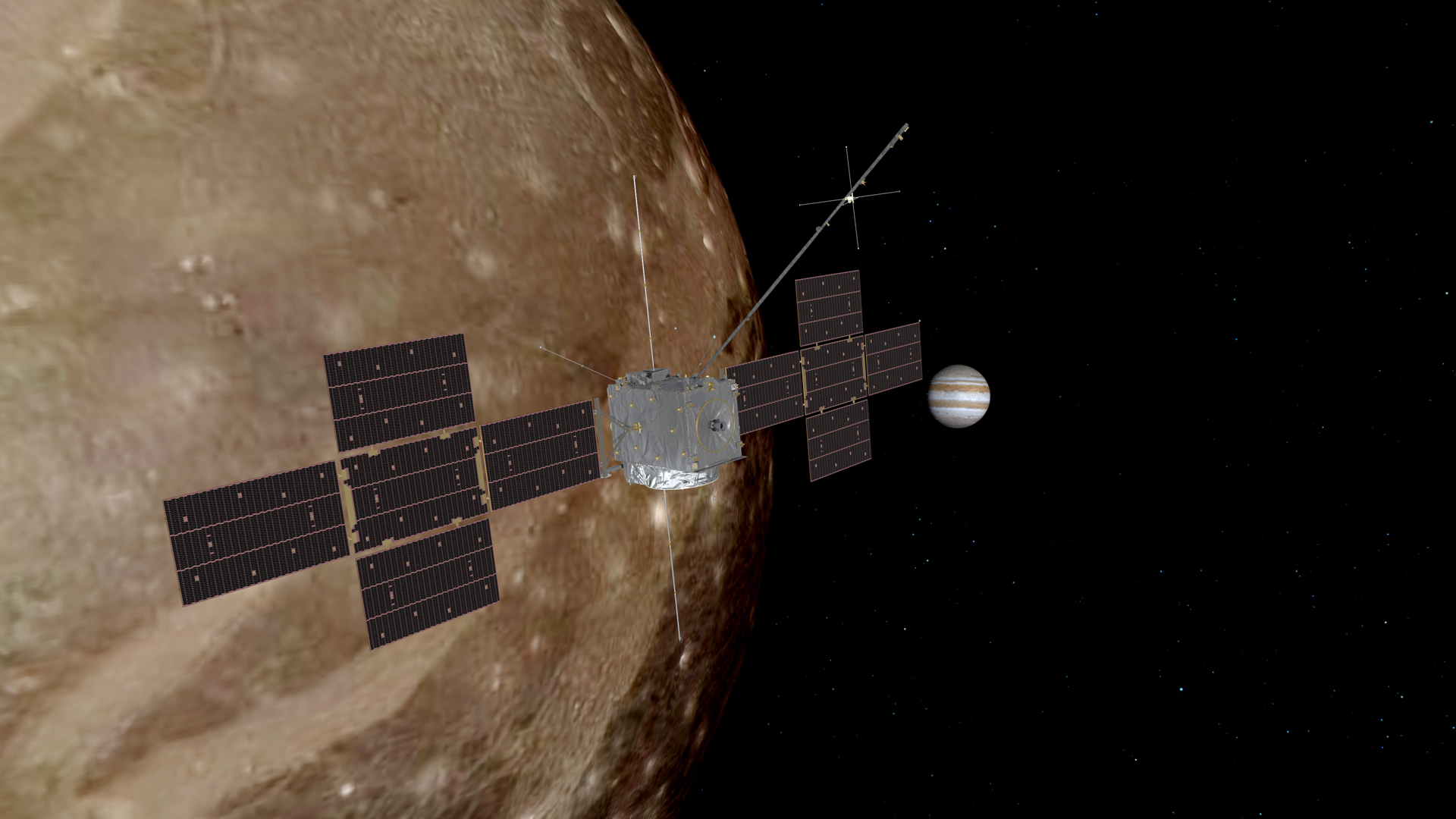
The Jupiter Icy Moons Explorer, or JUICE, is a European Space Agency (ESA) mission to explore Jupiter and three of its icy moons: Europa, Callisto and Ganymede.
A single orbital spacecraft with no lander, JUICE will orbit Ganymede, the solar system's largest moon, becoming the first probe to orbit a planetary moon other than Earth's.
JUICE successfully launched on April 14, 2023, at 8:14 a.m. EDT (1214 GMT) from Europe's Spaceport in Kourou, French Guiana. But be patient, it will take nearly eight years to reach the largest planet in the solar system.
Related: Europe's Jupiter Icy Moons Explorer is unlikely to find life. Here's why.
The spacecraft will orbit the gas giant at the same time as NASA's Europa Clipper mission, which will examine the habitability of another Jupiter moon, Europa. Approximately four years after its arrival at the Jupiter system, JUICE will move into orbit around the gas giant's largest moon, Ganymede, to conduct the most extensive exploration of this body, which is larger than the solar system's smallest planet, Mercury.
Why do we need JUICE?
Only two spacecraft have orbited Jupiter: the Galileo probe, which studied the gas giant between 1995 and 2003, and Juno, which has been circling the planet since 2016.
The Galileo mission found evidence that oceans of liquid water might exist underneath the ice crust of three of the four main Jovian moons: Europa, Ganymede and possibly Callisto. The mission also found that Ganymede has its own magnetic field — the only known moon to possess one — and that storms in Jupiter's atmosphere can be larger than Earth.
Juno, now in the extended part of its mission, revealed many more details about these storms and found that the planet's atmospheric weather layer extends beyond its visible clouds. The mission also discovered that a core of dilute heavy metals might hide within the mostly gaseous Jupiter.
Still, many questions about Jupiter and its moons remain unanswered, especially those regarding the potential of some of those bodies to host life. Together, JUICE and Europa Clipper are set to deepen our understanding of the Jupiter system and perhaps pave the way for a future mission to land on Europa.
Related: Jupiter missions: Past, present and future
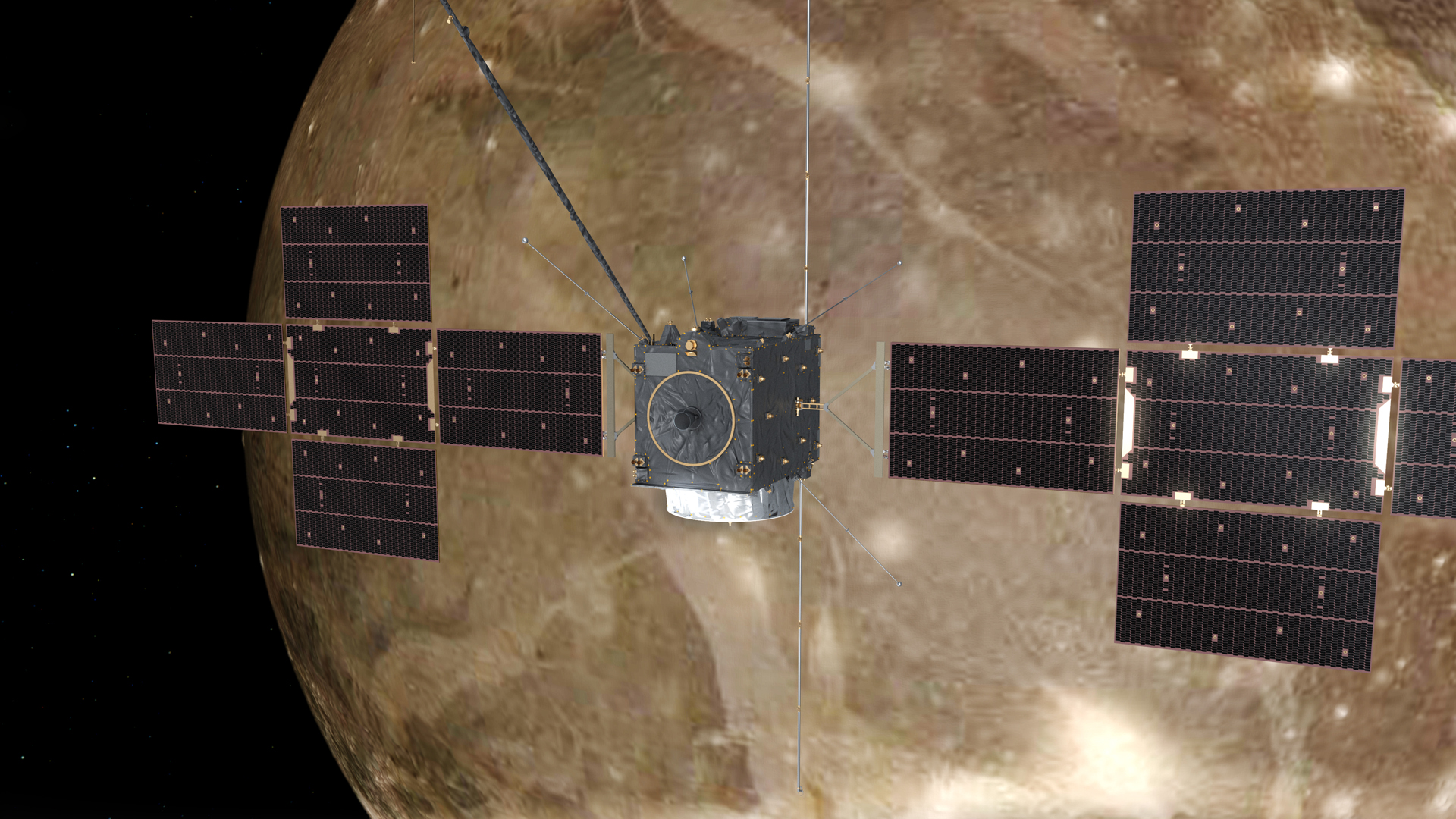
When will JUICE reach Jupiter?
JUICE's journey to Jupiter will take seven and a half years and involve three returns to Earth, where the spacecraft will receive gravity assists from our planet to adjust JUICE's trajectory. The spacecraft will also perform one such maneuver at Venus.
JUICE performed the first Earth flyby on Aug. 20, 2024, at 6:56 pm EDT (2156 GMT), providing us with some breathtaking images of our planet. Prior to its Earth rendezvous, JUICE flew past the moon about 24 hours earlier on Aug.19 at 6:15 pm EDT (2115 GMT).
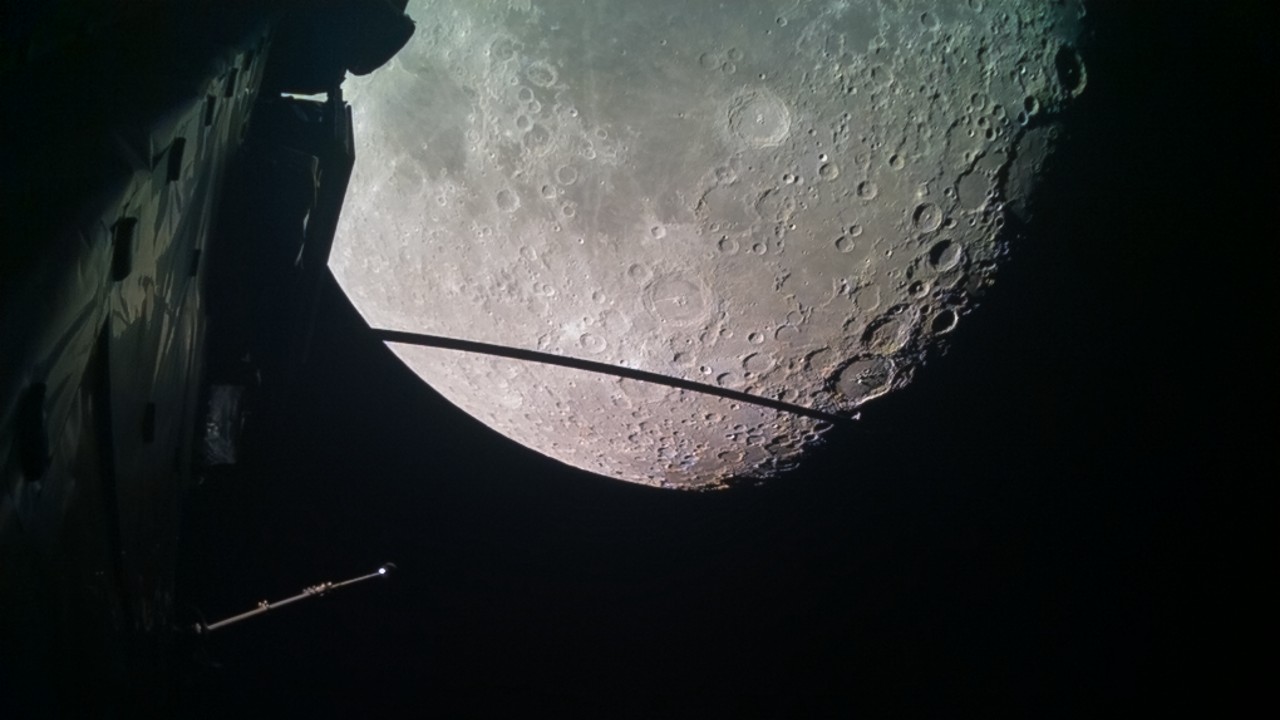
The spacecraft will arrive at Jupiter in December 2031 and spend three years orbiting the planet and making close flybys of three of its main moons: Europa, Ganymede and Callisto. The probe will then move into orbit around the largest moon, Ganymede.
What will JUICE do?
Because NASA's Europa Clipper spacecraft will already be orbiting Jupiter when JUICE arrives, making regular dives as close as a few dozen miles from Europa's surface, JUICE will focus mostly on Ganymede and the strange, less-explored Callisto.
JUICE will make only two flybys of Europa, coming within 250 miles (400 kilometers) of the moon's ice-covered surface during these excursions, according to ESA's JUICE launch kit. Europa orbits Jupiter at a distance of 417,000 miles (671,000 km), nearly double the moon-Earth distance. However, considering Jupiter's extreme size and powerful magnetic field, any spacecraft would survive only a few months, at best, if it were to stay that close to the planet. NASA's Europa Clipper will also follow the flyby approach to exploring this moon, only briefly visiting to study the icy moon and surrounding environment.
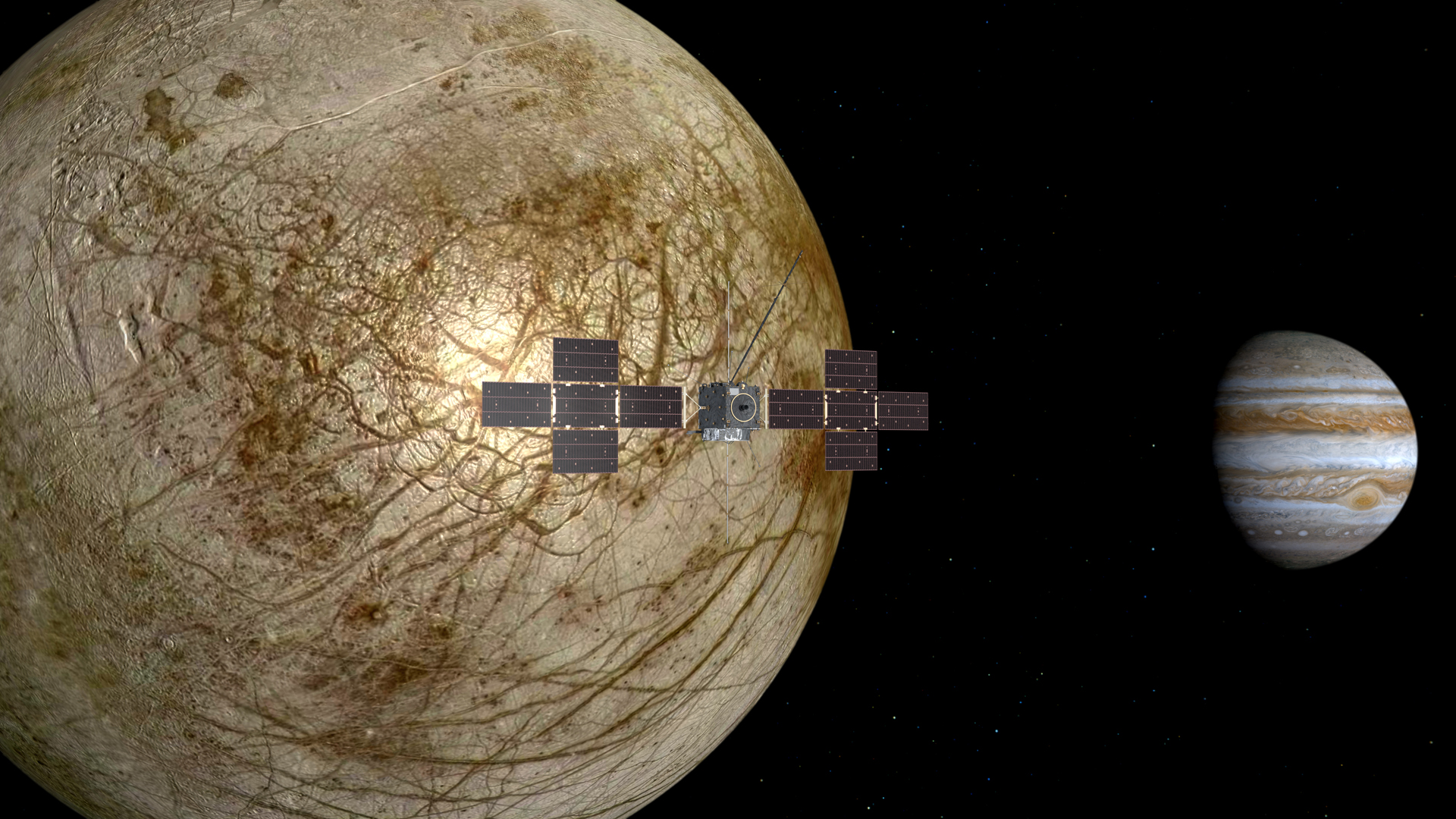
JUICE will perform 21 flybys of the most distant of the four main moons, Callisto, getting as close as 120 miles (200 km) from its surface. Orbiting nearly 1.2 million miles (1.9 million km) from Jupiter, Callisto is a very different world than the lively Europa, which is believed to have water plumes squirting through its ice crust. At about the size of Mercury, Callisto is the second largest of Jupiter's moons and has a crater-riddled surface that scientists think is the oldest in the solar system. Scientists are unsure whether Callisto has a subsurface ocean like those of Europa and Ganymede, and JUICE is very likely to answer this question.
Before entering orbit around Ganymede, JUICE will perform 12 flybys of the moon, coming within 250 miles of the magnetically active body, according to the ESA launchkit. Ganymede lives between the orbits of Europa and Callisto, 665,000 miles (1.07 million km) from Jupiter, and scientists think the giant moon is much less likely than Europa to host life. There is, however, a small chance that JUICE may find a surprise.
What will JUICE teach us about Jupiter's moons?
JUICE will carry 10 scientific instruments that, together with a similar package on Europa Clipper, will help scientists analyze Jupiter's moons and their potential to host life.
Among JUICE's instruments are cameras, sensors for analyzing the chemical composition of the moons' ice crusts and their surrounding environments, magnetometers, and radar that will create detailed maps of the moons' surfaces and, for the first time, peer beneath them.
Scientists hope that these measurements will confirm the presence of oceans beneath the moons' icy crusts. The notion that these moons harbor massive water bodies that could potentially host life came from the Galileo mission, which measured odd disturbances in the magnetic field around Jupiter. Scientists attributed these anomalies to the motion of liquid inside Europa and Ganymede, Olivier Witasse, a JUICE project scientist at ESA, told Space.com.
"The moon, which carries a salty ocean, is embedded into the big magnetic field of Jupiter, and that disturbs the magnetic field around the moon," Witasse said. "If you are able to measure variations of the magnetic field around the icy moon, you can attribute that to the presence of subsurface liquid which is maybe 200 kilometers [120 miles ] underneath the crust."
With JUICE, scientists will use an additional technique to prove that these obscured oceans exist. By making regular measurements of the surfaces of Ganymede and Callisto with laser altimeters, JUICE will reveal how the shapes of these moons change over time as the moons move through Jupiter's enormous gravitational field. The moons experience gravitational pulls and kicks that trigger tides that are much more pronounced than those on Earth. How pronounced these tides are depends on what the moons are made of.
"The moons are changing shape over time due to the gravity of Jupiter," Witasse said. "The elevation of the surface changes with time, and we can detect this. The amount of elevation depends on what's inside the moon. If the icy crust is floating above liquid, the tides will be much bigger than if everything inside the moon is solid."
Observations by the Hubble Space Telescope and some of the world's most powerful ground-based telescopes provided more evidence for the presence of liquid water oceans on Europa and Ganymede, and even detected water vapor in Europa's atmosphere.
But there are still many unanswered questions about those hidden water bodies. Scientists have only a limited idea of the size of these oceans, Witasse said. They don't know exactly how deep the oceans are, how thick their ice crusts are, or how much water the oceans hold.
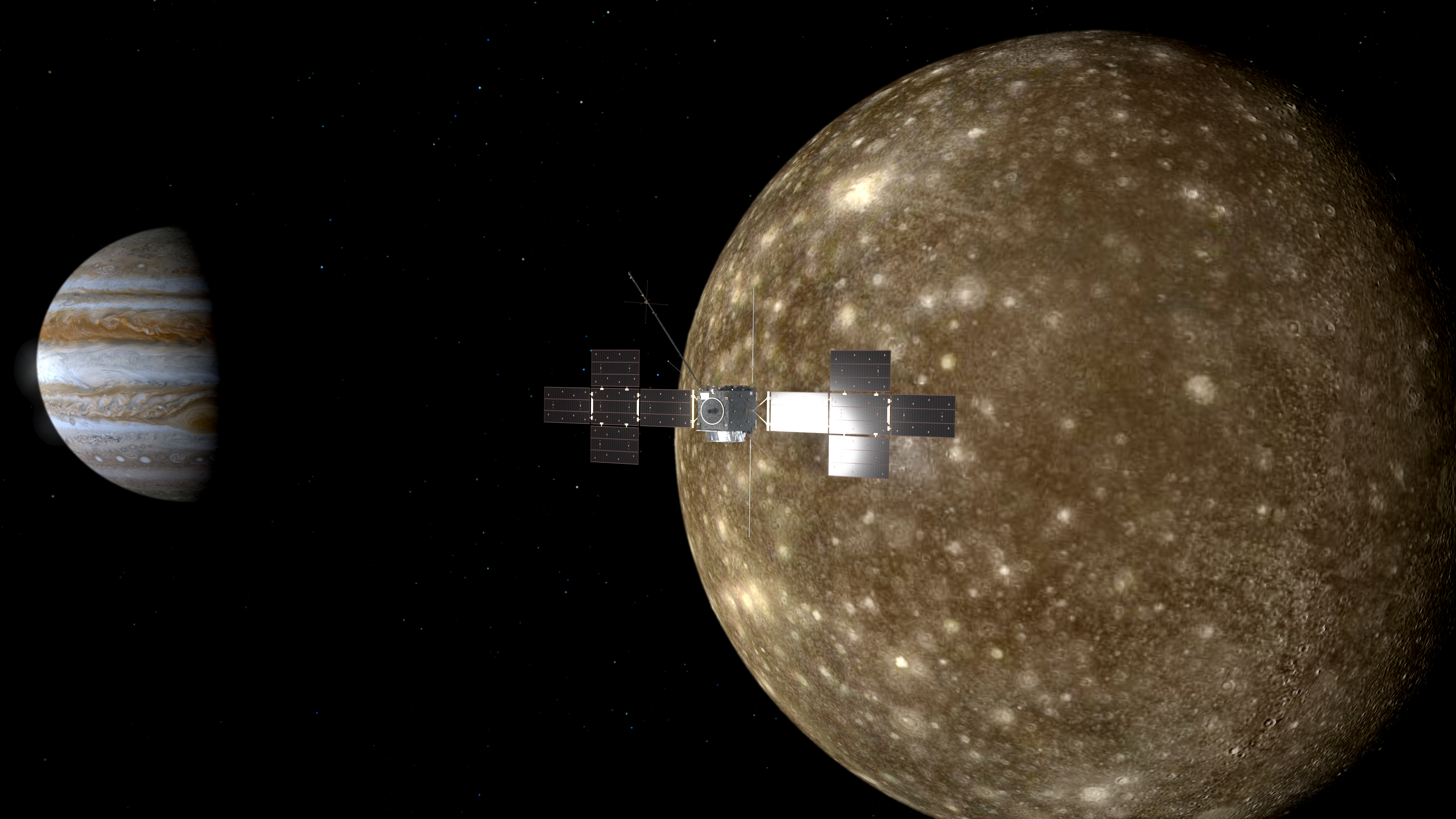
Scientists are less certain that Callisto has an underground ocean, but JUICE will likely answer this question. The most removed from Jupiter of the four main moons, Callisto is a strange world that astronomers think may have the solar system's oldest surface. The moon is believed to be completely inactive and features an enormous collection of craters holding a record of its entire history. JUICE's high-resolution cameras and sensitive instruments will help scientists explore not only the story of Callisto but with it that of the entire solar system.
"Callisto formed 4 billion years ago when Jupiter formed," Witasse said. "And the image of Callisto we see is from the time that it was born. In contrast, Europa is a very active surface, which is only 50 million years old and is resurfacing all the time."
In the case of Ganymede, JUICE's main target, scientists hope the mission will help them better understand why the moon has its own magnetic field, which has not been seen in any other moon in the solar system.
What will JUICE teach us about Jupiter?
NASA's Juno mission mapped Jupiter's atmosphere and its powerful storms in great detail. Still, there is plenty more to learn about this thick shroud of hydrogen and helium. JUICE's submillimeter wave sounder will allow scientists to measure wind speeds and temperatures in the gas giant's atmosphere and provide new information about its weather and climate patterns. JUICE's spectrometers will be able to detect chemical compounds in some parts of the planet's atmosphere with better accuracy than what was previously possible, Witasse said.
ESA hopes data from JUICE will help scientists understand what maintains the visible light and dark bands in Jupiter's atmosphere, which are known to differ in opacity and spread from the equator toward the poles. The probe will also study processes in the planet's middle and upper atmosphere, which extends beyond the visible clouds.
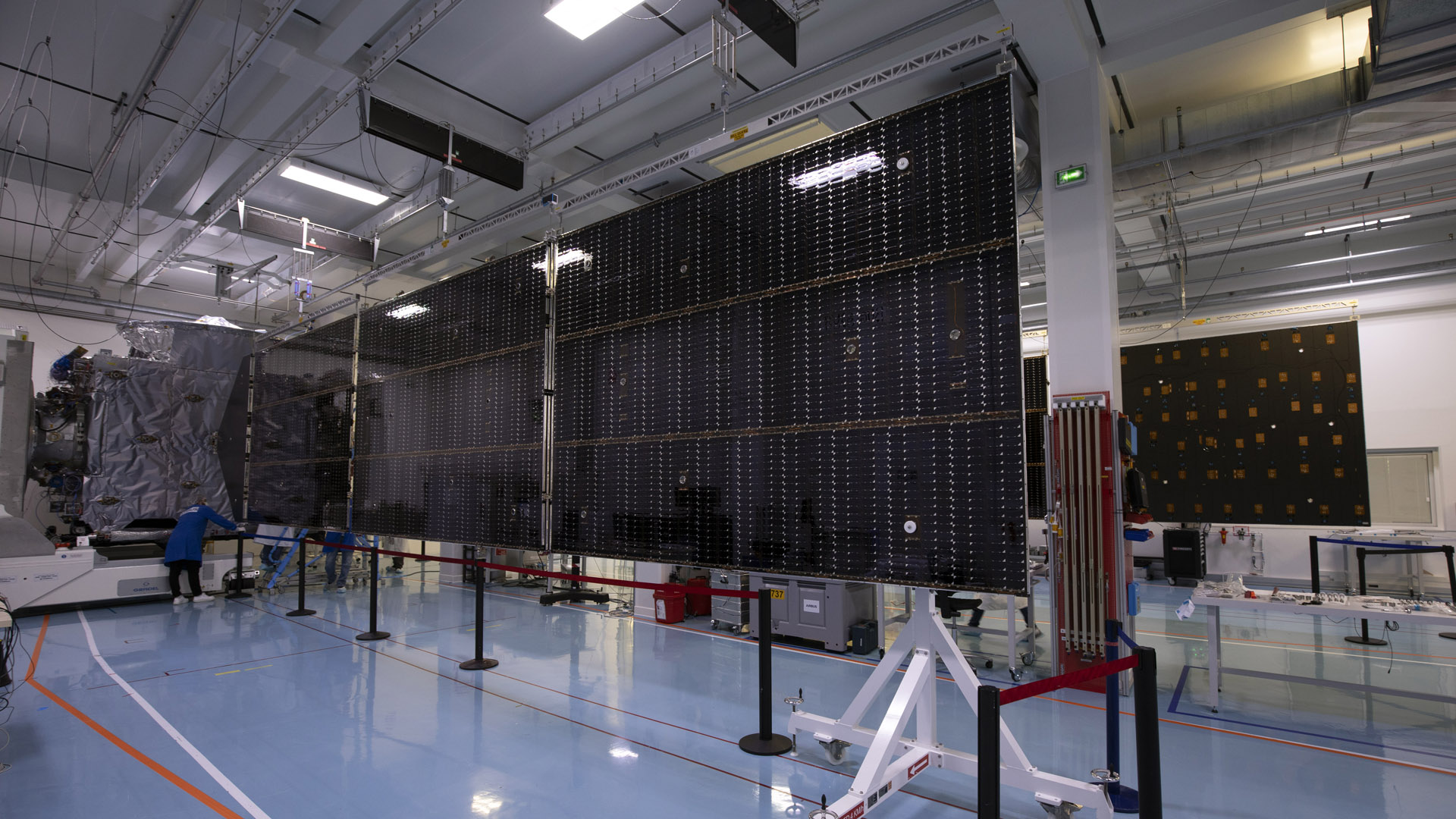
By collecting data about Jupiter and three of its moons, JUICE will enable scientists to analyze the entire Jupiter system, which can serve as a miniature model of a star system.
"By studying it, we can learn more about how the solar system and exoplanetary systems work, how planets form, and how life can emerge under different conditions," ESA said in a statement.
Will JUICE find life on Jupiter's moons?
JUICE is not expected to find life on any of Jupiter's moons, although its instruments might be able to detect molecules that could be signs of life under the moons' surfaces. JUICE will spend most of its time studying Ganymede, which is less likely to host life than Europa is.
There are several reasons life is more probable on Europa than on Ganymede: It's closer to Jupiter, it's more active and it has similarities to Earth.
"Europa is closer to Jupiter; there is more gravitational attraction from Jupiter, so the tides are much larger," Witasse said. "There is more heating inside the moon; the moon is much more active than Ganymede. And when you search for life, it's better to search in active places. Also, the ocean on Europa is in contact with a rocky substrate, which means it's quite similar to what we have on Earth and there might be some interesting reactions and hydrothermal activity going on, just like at the bottom of Earth's oceans."
In fact, scientists are so confident that there is no life on Ganymede that the JUICE spacecraft will crash into the moon at the end of the mission to avoid slamming into Europa and contaminating it with Earth microbes.
What are the major technical challenges of the JUICE mission?
The environment around Jupiter is not easy to operate in; the planet's powerful magnetic field accelerates charged particles in its vicinity and creates intense radiation that quickly degrades spacecraft electronics, and the closer to the planet, the more powerful the radiation. Therefore, JUICE has to be fitted with elaborate radiation shields that protect its sensitive instruments.
As Jupiter is more than five times farther from the sun than Earth is, the JUICE spacecraft will receive far less sunlight than satellites orbiting our planet. To generate enough electricity to power the spacecraft, JUICE's solar panels have to be enormous — 914 square feet (85 square meters), with each wing shaped like a cross.
"It took a lot of time to find the right solar panel cells," Witasse said. "They need to work at low temperatures in a high-radiation environment and be able to give enough power. So that was a big, big challenge."
JUICE will have to withstand frigid conditions; temperatures in Jupiter's orbit drop to minus 382 degrees Fahrenheit (minus 230 degrees Celsius). During its journey to the planet, however, JUICE also will have brief exposure to extreme heat during a flyby at Venus, where temperatures reach a scorching 482 F (250 degrees C).
Q&A: Olivier Witasse, ESA JUICE project scientist
What information are you looking forward to the most from the JUICE mission?
I am really looking forward to the broad interdisciplinary science that we will do with JUICE. We don't go to Jupiter every two years. It's maybe once in a lifetime for ESA, so we wanted to make the best mission ever. We will touch many topics: the interior of the moons, Jupiter's atmosphere, Jupiter's magnetic field. But obviously, the big question is, do Europa, Ganymede and Callisto have an ocean? Any answer will be interesting. It will be interesting to understand how the presence of water changes with the distance from Jupiter, because that can have implications for our understanding of the presence of water in the solar system. And liquid water, as we know, is the main prerequisite for life as we know it.
What quality images will JUICE be able to obtain?
Our cameras will be able to get images of the icy moons with an excellent resolution: less than 10 meters [33 feet] per pixel. We will have global coverage — particularly of Ganymede, and hopefully, Callisto. I'd say that of these two moons, JUICE will take the best images ever.
For Jupiter, we will not have such close images as Juno, for example, because we will orbit much farther away. And Europa Clipper will take much better images of Europa than JUICE; that's for sure.
JUICE is expected to crash into Ganymede at the end of its mission. But what if JUICE finds that there might be life on this Jovian moon?
The mission was designed in view of the current status of planetary protection. We have to follow the rules of what we call planetary protection. So, while at Europa, we cannot land; we cannot impact on. Ganymede is not the same category of bodies in terms of astrobiology and planetary protection. If we find some hint of life — and I doubt we will — then we might have to rethink the approach. But in any case, we have already shown that we can land on Ganymede or crash on Ganymede without contaminating the ocean. That was already studied, documented and published. Because the ocean is believed to be relatively deep inside the moon, if we impact with JUICE on the surface, we won't contaminate it, because it is maybe 100 kilometers [60 miles] underneath the surface.
Additional resources
For more information about the JUICE mission explore the ESA Science JUICE mission page. ESA has more information about the main science questions the mission aims to address and you can also read about the top five mysteries JUICE will solve. The mission launch kit provides further information about the mission.
Bibliography
ESA Science, JUICE, accessed on March 23, 2023
ESA, JUICE, accessed on March 23, 2023
https://www.esa.int/Science_Exploration/Space_Science/Juice
ESA Multimedia, JUICE Launch Kit, accessed on March 23, 2023
https://esamultimedia.esa.int/docs/science/Juice-LaunchKit.pdf







